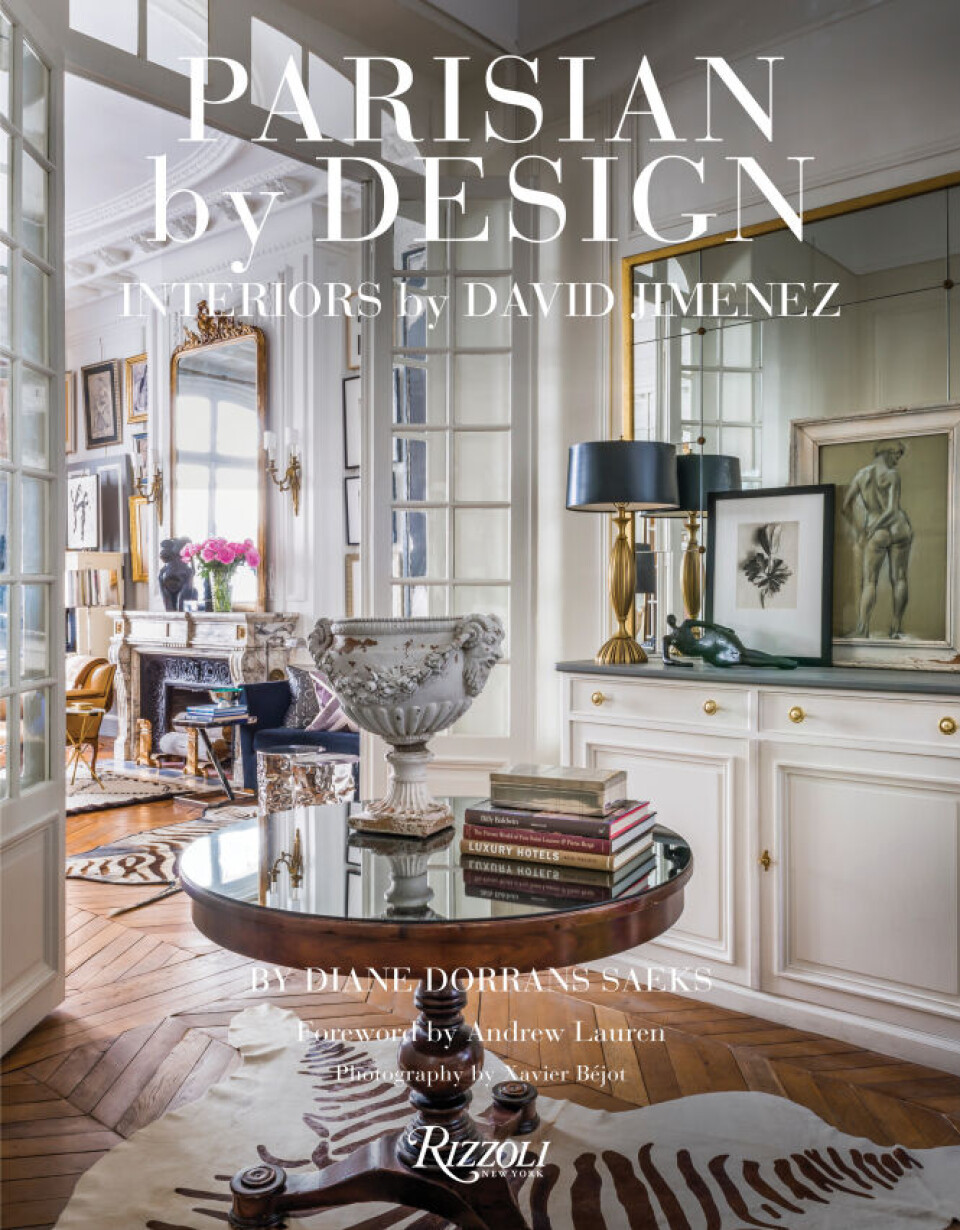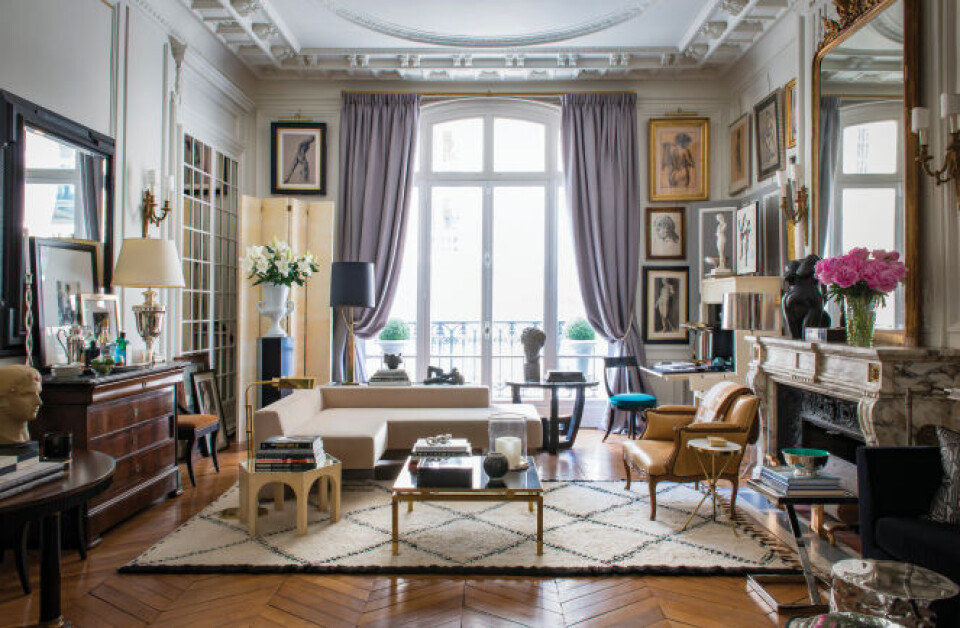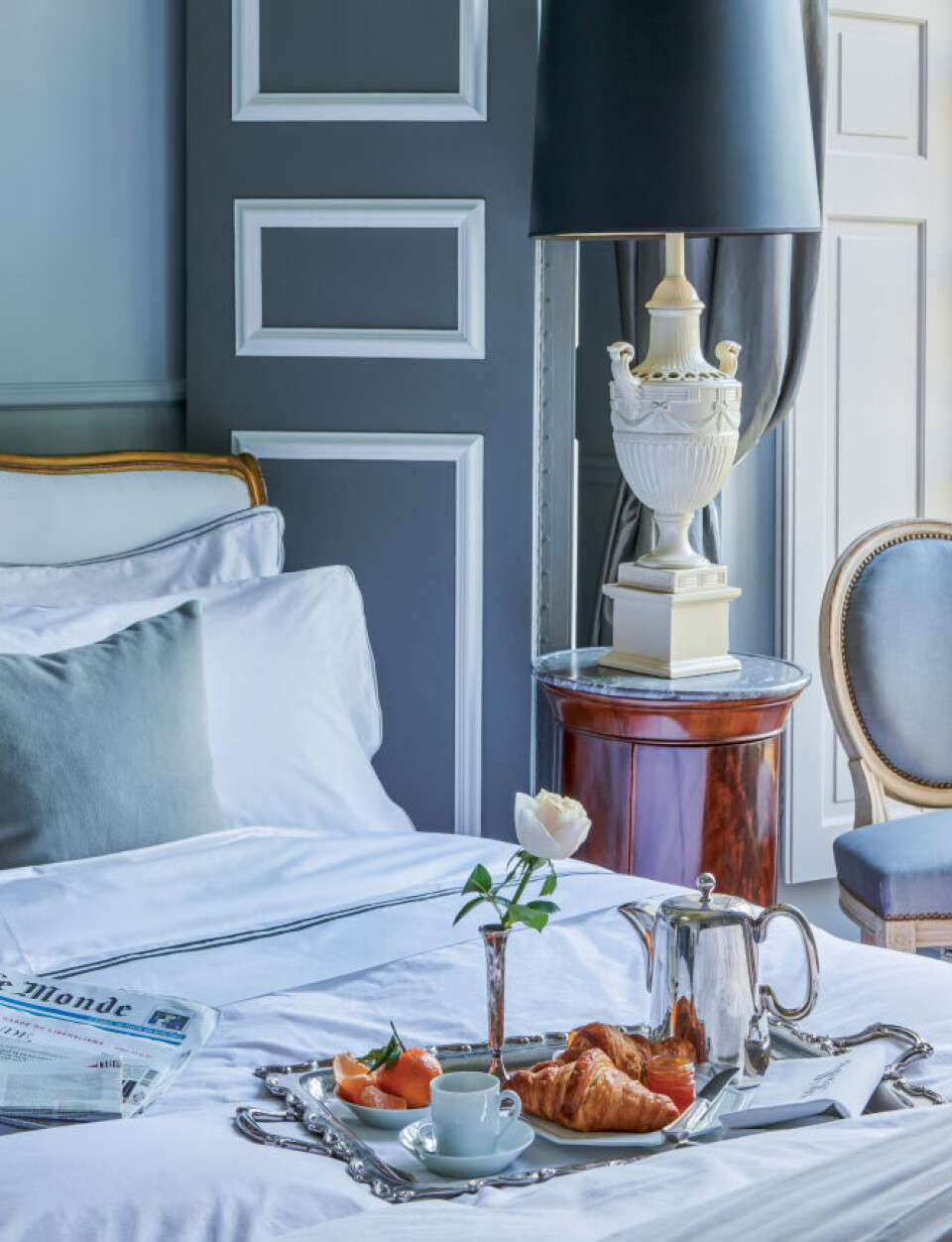-
France’s €3 book delivery fee challenged in EU court by Amazon
Online retailer said measure is protectionist and ‘in breach of EU laws’
-
Know your cheeses and their seasons: which to eat in France in February
Cow’s milk cheeses dominate as winter comes to an end
-
Films and series to watch in February to improve your French
Every month we outline good film and TV series to improve your language
Homes for living: new book about French style secrets
A stunning new book about the US interiors guru David Jimenez offers a peek into his own homes and chic tips for chez vous

A beautiful apartment in Paris is something we all dream of. A bohemian retreat, full of character and charm. In Parisian by Design: Interiors by David Jimenez, written by the doyenne of design Diane Dorrans Saeks, the esteemed designer inspires us with his interiors while sharing his secrets for how to decorate like a Parisian.

Parisian by Design: Interiors by David Jimenez, written by Diane Dorrans. Photo: Xavier Béjot
Jimenez has lived and worked in Paris for years, where he is celebrated for his beautifully livable interiors. With a classic and modern style, he creates the type of chic French-influenced interiors that so many of us aspire to whether an Ile Saint-Louis apartment and design studio, an elegant abode in the historic Hyde Park district of Kansas City, or Jimenez’s never-before-seen French country retreat.
With each wonderful residence, Jimenez imparts ideas and inspiration for how we can design our own space for comfort and style, layered with textures and colours, and artfully arrange collections of art, collectibles, and books.
A spirit of creativity

Photo: Xavier Béjot
Seven residences. One design studio. In Paris, Kansas City, San Francisco, Saintines – a life well-lived, with the spirit of creativity, curiosity and exploration. In his illustrious design career, David Jimenez has made a succession of daring moves, and finally his career and passion have taken him into the heart of Paris, his lifelong dream.
Elegance and classicism, timeless beauty, and the joy of experimentation are evident in each residence and in every room. Paris and its many charms have always resonated deeply within Jimenez and served as his inspiration and driving force.
Galvanised by his passion for French design and style, Jimenez cultivates his life around his pleasures, his work, and his life. With a quiet and intentional obsession for practicality, he produces interiors that welcome guests and delight the eye.
He appreciates innovation and subtle change, but resists the constant push and pull of modern influences. The intrigue of trends does not deter him from his full force-focus on timeless, tranquil beauty.
Jimenez’s approach is rooted in peace, privacy, and harmony. He considers every detail of a space and extracts as much delight from it as is possible. For him, the line of beauty is a constant thread through all of his residences and his design studio.
Avenue Marceau - An art-inspired life in the 8th arrondissement

Photo: Xavier Béjot
Tree-lined avenue Marceau delineates the elegant border between the 8th arrondissement and the 16th arrondissement, two of the most prestigious neighbourhoods on the Right Bank.
Avenue Marceau was inaugurated officially in 1854 and today presents a formal residential landscape of handsome grey stone facades, all very discreet.
This is the de rigueur location for embassies and consulates and for the stylish world of haute couture. “Avenue Marceau, elegant and classical, was the perfect location for my first Paris apartment. I loved every detail of the interior architecture. I pinched myself every time I arrived home from the airport. In the morning, I was awakened by the beautiful light,” Jimenez recalls. “This was the Paris of my dreams. Tall windows, and a lovely enfilade of rooms. It was my private retreat after a long day at corporate headquarters.”
“The avenue Marceau apartment made a great impression on me from first sight,” recalls Jimenez. “The statuesque dimensions of the classical Haussmannian stone exterior punctuated by a pair of tall, dark-grey lacquered front doors with polished-brass hardware, I knew I wanted to live there. I took four steps up into the carpeted entry. With twenty-foot ceilings, bronze chandeliers, mirrored walls and polished brass handrails, it had all the opulence of a five-star hotel.”
An ornate baroque-style elevator escorted him gracefully and silently up to the apartment. “It felt like a diplomat’s residence, with an overscale living room / reception room and 18-foot-high ornamental ceilings, herringbone parquet floors, and rooms for gracious entertaining,” observes Jimenez. He immediately painted the walls Flat White by Farrow & Ball, and gathered his art collections, carpets, pillows and French antiques to make it his own.
“As soon as I started placing my furniture and hanging mirrors, the rooms came to life,” David says. “The afternoon I finished hanging all paintings, I chilled a bottle of Ruinart and called friends over to celebrate.”
Chic paint colours - A French Approach to Colour

Photo: Xavier Béjot
French interiors and historic residences display a distinctive colour sensibility that combines a respect for architectural heritage and a playful boldness.
Traditionally, there was an intentional progression from neutral exterior colours and materials – stone, limestone, iron, slate, zinc, often repeated in entrance halls and staircases – to increasingly opulent and richly coloured interior rooms, creating a sense of surprise.
When fashions changed, the progression was reversed, moving from, say, a multi-coloured marbled hall to interiors of ivory and muted cream.
Colour can also be an expression of a bygone era when new pigments or techniques were used to create a sensation.
During the 19th century, there were rules and fashions for the use of colour: for example, faux stone for entrance halls; white and gold in sitting rooms; Pompeian red, Egyptian ochre, or Venetian red/salmon for dining rooms; dark green or tobacco brown for fumoirs (smoking rooms) or libraries; pale blue and white ivory for a woman’s boudoir or bathroom. When fashions changed, these rules were turned on their head.
The French palette, refined, expanded and intensified over centuries, draws heavily from both a spectrum of neutrals and a band of sumptuous, rich colours.
French blanc cassés (off-whites) are distinctive in the way they feel aged, muted, less bright than a full white; they also give an interior the appearance of having a past, a story. They evoke elegance and warmth compared to more brilliant, unmodulated whites.
Another foundational neutral, French grey, has an interesting origin story. The French refer to it as grège, and it was historically a custom melange of colours. The hue can vary from dove grey to blue grey to lavender and everything in-between. As it is not a specific colour, it feels timeless.
Some colours in the French palette are unapologetic in their boldness – reds are fiery, yellows almost sparkle with sunny boldness, turquoises are often sharp and bright.
Many historic buildings and interiors are listed as protected in France, so the original colours (and materials) remain the same as they were in the past. Because of this, the public is used to seeing these colours and appreciates them.
Related links
Career change from barber to representing France with luxury woodwork
Our green home made from tyres is part of us says family in France
Growing trend for shipping containers as trendy pools in France
Art of trimmings: The artisans who supplied French and Monaco royals
























